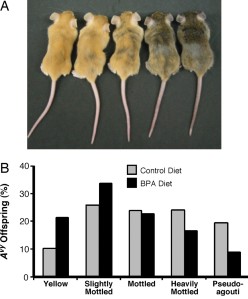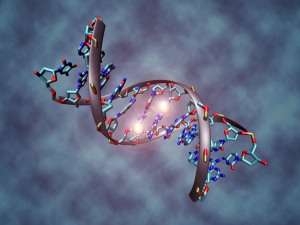Type II diabetes (T2D) is a metabolic disorder characterized
by hyperglycemia (high blood glucose levels), insulin resistance, and a host of
other symptoms such as obesity, poor circulation, and heart problems. It is the
fifth leading cause of death in the United States, and the number of people
diagnosed per year continues to increase.
Two of the defining characteristics of T2D, hyperglycemia
and insulin resistance, are directly related to each other. Insulin is a
hormone secreted by the pancreas that causes cells to take up glucose from the
blood, where it is used for energy. In T2D patients, the body’s cells are
desensitized to insulin; the cells do not respond adequately to normal levels
of insulin, and as a result glucose remains the in the blood. This is the cause
of hyperglycemia so closely associated with T2D!
Though studies suggest a strong link between high caloric
diets with increasing rates of T2D (like eating too much sugar and simple
carbohydrates!), human patients are rarely diagnosed with T2D because of their diet
alone. In addition to diet, other complicating factors include lifestyle
choices, stress, and genetic predisposition to the disease. Although the
genetic factor of T2D is highly complex in humans, mutations in the genes
controlling gluconeogenesis, β-oxidation, and insulin-dependant FOXO targets
are consistently correlated with an increased chance of developing T2D.
A recent study published in 2011 suggests that fruit flies, Drosophila
melanogastor , can also develop T2D with only a high sugar diet, and
exhibit many of the same pathologies in metabolism that are seen in human
patients with T2D! Like humans, Drosophila have an “insulin-like”
hormone (DILP, Drosophila insulin-like peptide) that shares a very
similar structure and function with human insulin. When fly larvae are raised
on high sugar diets, they develop hyperglycemia and DILP resistance, despite
being shown to have normal levels of DILP in their bodies.
The study also pinpointed potential causes of
DILP-resistance in the flies, on a genetic level. To analyze for abnormal gene
expression, RNA concentrations in high-sugar fed flies were compared with those
in control flies. DNA is transcribed into RNA,
which is then translated into the various proteins associated with the
transcribed genes. Increased concentrations of one RNA transcript suggests
elevated activity in its associated gene, while decreased levels suggests lower
activity. The study found that the
DILP-resistant cells had lower expression of an important T2D susceptibility
gene hexokinase C, and increased levels of gluconeogenesis and
B-oxidation; all of these observations are
consistent with previous genetic studies in human patients with T2D!
A flowchart summarizing the hypothesized mechanism of
insulin resistance in Drosophila.
Although the exact mechanism that causes insulin resistance
is unclear, these metabolic processes have been well studied and are strongly
associated with T2D in humans, mice, and now possibly Drosophila. The implications of these results are quite
revolutionary; they suggest that the metabolic mechanisms of T2D are
evolutionarily conserved across vertebrates (humans) and invertebrates (Drosophila)!
With the help of the fruit fly as an excellent and simple model for this common
human disorder, we may be able to sort out the exact consequences of diet,
lifestyle, and genetics separately in T2D development in humans. While human
T2D is immensely complex, teasing out the nuances of each factor may hold the
key to developing more effective treatments for patients in the future!
Connie Duong







